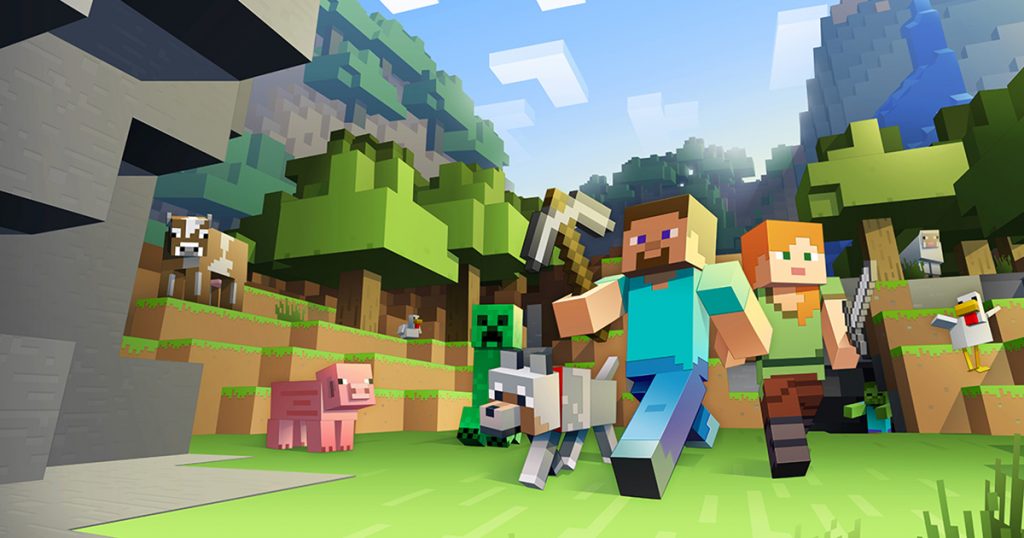Do you play the video game Minecraft? If you don’t, your kids or somebody close to you probably does. Not since Pac-Man has a single video game been this popular. Here’s a look into the origins and impact of this cultural behemoth. (This article was first published in our 31st annual edition, Uncle John’s Actual and Factual Bathroom Reader.)
PRESS ANY KEY TO START
- Markus Persson was born in Sweden in 1979. As a child, he exhibited a natural talent with computers, and he was fortunate to grow up in a time when they were starting to become both accessible and affordable. Using a computer language called BASIC and his family’s Commodore 128, he started learning computer coding at the age of seven…and was making games to play with his friends by age eight.
- He stuck with it as he grew up, and when it came time to start planning for life post-graduation, Markus told his high school guidance counselor that he wanted to design video games for a living. The counselor told Markus that his dream was just that—a dream, and it was never going to happen.
- Undaunted, Markus kept making small, simple games for himself, while he worked as a programmer for various companies in Sweden, including King, a software developer that made web-based games, and Jalbum, which makes digital photo sharing software.
READY PLAYER ONE
- But Persson soon grew bored with his programming job, and started to spend all of his free time building his most complex game to date. He decided to call it Cave Game, and it would be a game of simple graphics (resembling Nintendo games from the 1980s) that centered on a player going on a mystical quest, exploring caves, and fighting off mythical beasts.
- But then he changed his mind. He decided to lose the plot and have the game be an open world full of endless possibilities with no clear objective. And he changed the name to Minecraft.
- The “mine” part: players could dig in the ground (and seas, and underground, and other “biomes”) to look for wood, iron, gold, emeralds, and other materials. With those, they could build simple structures or fantastic towers…they just had to look out for the skeletons, zombies, and other bad guys hanging around. The worst villain of all: the Creeper, a green monster that would approach players’ hard-built structures…and blow them up.
GAME ON
- In 2009 Persson (who started going by the name “Notch,” a nickname he used in online video game forums) released the original, not-quite-polished “alpha” version of Minecraft online. Length of time it took him to design it: six days.
- While a lot of video games receive a huge, multimedia push, this wasn’t that kind of game. The only reason anyone knew it existed was because Notch wrote on the video game forum TIGSource that he’d released a game called Minecraft on his website (Minecraft.net—it’s still live). “It’s an alpha version,” he added, “so it might crash sometimes.”
- Notch’s plan: Sell the game to a small video game company for enough money so that he could quit his job and then design another game. Then he’d sell that one, and repeat the process. That’s not exactly what happened.
EXTRA LIVES
- Most of the most popular video games in history—Pac-Man, Super Mario Bros., The Sims—were developed by huge software companies, and designed, programmed, and marketed by armies of employees. Remarkably, Minecraft was a one-man operation. Notch designed, programmed, and released the game literally by himself. That also meant he got every last penny from its sale.
- From that single post on TIGSource, the popularity of Minecraft grew—its appeal was in its simplicity and open-ended format. By the summer of 2010, tens of thousands of people around the world had downloaded Minecraft. The way they paid for the game was as humble as the game itself: they sent Notch a few bucks via PayPal.
- When Notch’s personal PayPal account reached over $760,000, the service locked his account—they thought he was doing something suspicious, maybe even illegal.
- Having made almost a million dollars, Notch decided to quit his job at Jalbum to devote himself to Minecraft full-time. He resigned on his 31st birthday.
LEVEL UP
- Part of devoting himself to Minecraft meant expanding the operation to keep up with demand. To continue adding elements to the game and issuing updates to its growing army of players (something that was impossible for the manufactured disc or cartridge segment of home video games), Notch had to delegate the business side of things to other people. He formed a company called Mojang (the Swedish version of “whatchamacallit”) and hired six people to help with programming and processing payments.
- As Minecraft grew, so did attention from beyond just the people who were playing it. And a lot of people were playing it—by the end of 2010, it had sold 500,000 copies, and “Minecraft” was YouTube’s top search of 2014, and Google’s #2 search.
- Notch started getting offers. The video game publisher Valve wanted to buy Minecraft or hire Notch and other Mojang staffers, but Notch resisted. Nevertheless, in 2011 he announced that he’d be leaving the company and his game. Reason: He’d created and shared his game, and said he was ready to move on to something else.
- A few months after Notch announced his departure, Microsoft bought Mojang and Minecraft. Price tag: $2.5 billion. Bill Gates’s software giant beat offers from video game companies like Valve, Electronic Arts, and Activision, as well as a $1 billion offer from an anonymous tech giant, rumored to be Google.
MINECRAFT BY THE NUMBERS
- Despite being less than a decade old, Minecraft is already the second-best-selling video game of all time. More than 120 million copies have been sold worldwide. (It trails only Tetris.)
- Minecraft is the most-played online game. Fifty-five million people hop on the internet to play it each month. That’s quadruple the number of people that play the second-most-popular online game, World of Warcraft.
- Markus Persson now lives in the United States full-time, in an expensive estate in Beverly Hills. How expensive? He paid $70 million for it—making it the priciest home in the pricey L.A. suburb. (He outbid Jay-Z and Beyoncé for it.)
- Minecraft remains the best-selling independently produced game of all time. That means it wasn’t published by a huge video game company, the way nearly every other video game is.
- Minecraft is also the fourth-most-lucrative thing to ever come out of Sweden, trailing only Volvo, IKEA, and the band ABBA.
- Did Microsoft get its money’s worth? In the year before the corporate giant bought the rights to Minecraft, the game generated $81 million. In the year after the Microsoft purchase, it made $237.7 million.









